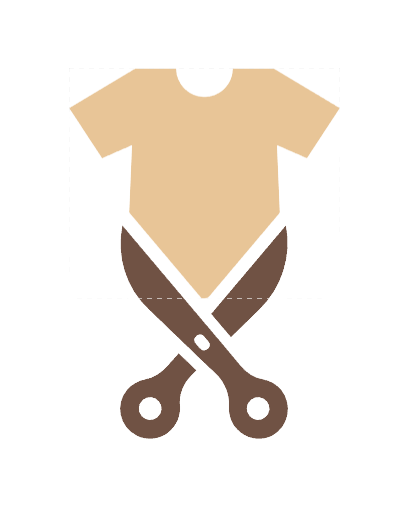Since the dawn of civilization, societies have expressed themselves through fashion. Examining the styles of any given era will reveal interesting insights about the culture, attitudes, and visuals of its time. Join us on a historical journey as we explore the evolution of fashion through the ages, and discover how styles shifted and progressed through the centuries.
1. A Glimpse Into the Past: Exploring the Evolution of Fashion
Fashion is one of the most influential aspects of pop culture, undergoing constant evolution and change while serving as a reflection of the state of society. From the ornate fabrics of Victorian-era dress to the casual florals of the 80s and minimalist fashions of the 90s, there’s plenty to explore looking through the lens of fashion.
The 1800s saw a rise of elaborate styles, as fashion became available past the limits of the upper class thanks to the industrial revolution. Women proudly donned corsets and long skirts, while men’s clothing kept a more subdued style.
The 20th century followed a flapper-style for a time, with women favoring loose-fitting frocks and short beaded dresses. Men took their cues from classic suit cuts, with bold stripes and 3-piece suits. But as the world moved into the 60s, fashion reflected a wilder exploration – bright colors clashed together, long overcoats and metal-studded leather jackets flourished.
- The 70s: When the 70s arrived, fashion also took a dip – bellbottoms were in, and so were platforms and tie-dye
- The 80s: The 80s leaned into a more casual look, featuring pastels, neon, and casual dress
- The 90s: The 90s saw the emergence of minimalism, with classic cuts making a big return and vintage pieces taking the spotlight
Fashion serves as an ever-changing snapshot of history – years down the road, a simple look-back can tell the stories of where we’ve been, and the artistry of where we’re going.
2. Ancient Empires and the Rise of Jewel-Encrusted Fabrics
Rulers and warriors of ancient empires understood the importance of showcasing their power through adornment. Rich fabrics were the ultimate symbol of status but were often heavy and uncomfortable. To transform these fabrics into something more luxurious and lightweight, ancient jewellers would encrust them with precious gems. Such fabric was desirable and provided wearers with an indication of their wealth and power.
Jewellery-embellished fabrics were magical in their transformative qualities. While being lightweight and comfortable to wear, they also allowed for an ornate wardrobe. This meant that people could take on the persona of royalty. Diamonds, gold, rubies, and sapphires were often added to fabrics, and these were then regarded as invaluable for their beauty and craftsmanship. Moreover, these colours would often shimmer even from a distance, providing a vibrant sense of stature.
Social hierarchy in ancient societies was complicated, however, adorned fabrics offered an immediate form of recognition. The most extravagant, bejewelled fabric would signify the highest and most important class. Fabrics decorated with wood or stones, meanwhile, were reserved for more average members of society. The fabric was also often used to record religious events or special ceremonies, creating a tangible element of a bygone era.
- Adorned fabrics provided a tangible symbol of status and wealth
- The material was lightweight and comfortable to wear
- Gems and jewels were used to create spectacular designs
- Jewelled fabrics offered an immediate form of recognition
3. The Spreading Influence of the Renaissance and Fabrics of Europe
During the Renaissance period, new forms of art, architecture, and textiles spread throughout Europe. As an example of this, velvet, which had originated in Turkey, became popular across Europe due to its ability to be draped in beautiful folds. These fabrics increased in vibrancy and complexity as the Renaissance progressed, with new exquisite designs often featuring intricate details.
rich, elaborate brocades were particularly en vogue. These designs, made from blending different colours of yarn and often incorporating beautiful metal threads, featured symmetrical patterns and natural motifs like the leaves and fruits of trees. Wool was also widely used, both in Europe and on the other continents the Renaissance had spread to, such as parts of Africa and China.
Distinctive regional fabrics also developed during this era. For instance, the flamboyant designs of the French would become internationally renowned for their vibrancy and flair, while Italian fabrics were known for their elegance and luxury. Despite these regional differences, there was a common thread woven into the fabrics of Europe: a spirit of exploration, discovery, and innovation.
4. Rococo Silks and Fabrics of the Enlightenment
were a style of luxurious clothing material that became popular among the fashionable set during the early 1700s. Adorned with ornate crests and flourishes, the movements’ signature materials were rich in both texture and symbolism, each seemingly constructed to invoke grandeur and a sense of finesse.
Fabrics of the movement typically featured cotton and silk compositions, with accents of lace and other delicate elements such as ribbon and trimmings. These textiles were often so finely woven that they appeared to be to be mere air. Bold, vivid colors were also often used, with pastels like rose, sky blue and powdery yellow seen as being especially appreciated.
Embellishments of the era were incredibly intricate and often elaborate as well. Brocades were used to create impressive designs, and embroidery and floral patterns featured prominently. In terms of cut, fabrics of the movement were often voluminous in shape, with plenty of gathers and pleating.
As a result of all its aesthetic characteristics, Rococo materials were perfect for evening and special occasion dressing. In terms of use, this included dressing for encounters such as theater performances, operas, ballets, concerts, and other social gatherings. As a result, these materials became the accent of choice for the most fashionable and well-to-do of the 18th century.
5. The Industrial Revolution and the Dawn of Ready-to-Wear Fashions
Clothing in the Industrial Revolution
The Industrial Revolution of the late 18th to the early 19th century had a profound impact on the world’s economy. In addition to bringing technological developments that enabled mass production, it had a major influence on fashion.
Prior to this period, clothing was primarily handmade, one-off items. But with mass-production, clothing became much more affordable and accessible to the general public. For the first time, the working classes could afford ready-to-wear garments.
As a result, consumer demand for clothing expanded tremendously. Mass-produced clothing was cheap, ready to wear, and could be changed frequently as desired. Ready-made clothing came in different sizes and shapes, allowing people to pick something that fit their lifestyle and individual body shapes. It also enabled them to buy a wide range of different articles of clothing and mix and match them with items already in their wardrobe.
- High production costs lowered prices of clothing.
- Consumers gained access to ready-made clothing.
- Clothing could fit individual body shapes.
- Articles of clothing were affordable and interchangeable.
The introduction of ready-made clothing in the 1800s was seen as a major breakthrough in fashion history. This period marked the birth of the modern fashion industry and established the concept of affordable clothing for everyone. The impact of this revolution extended far beyond the fashion industry and is still felt in the modern world today.
Fashion Through the Ages has shown us that style is constantly evolving. What was once popular decades ago may be seen in a different light today. The return of vintage looks, with modernized elements, shows how fashion is interwoven into the fabric of societies through both time and place. As fashion continues to develop to fit societal needs and styles, it will be interesting to see what the future has in store for the wonderful, ever-changing world of fashion.





